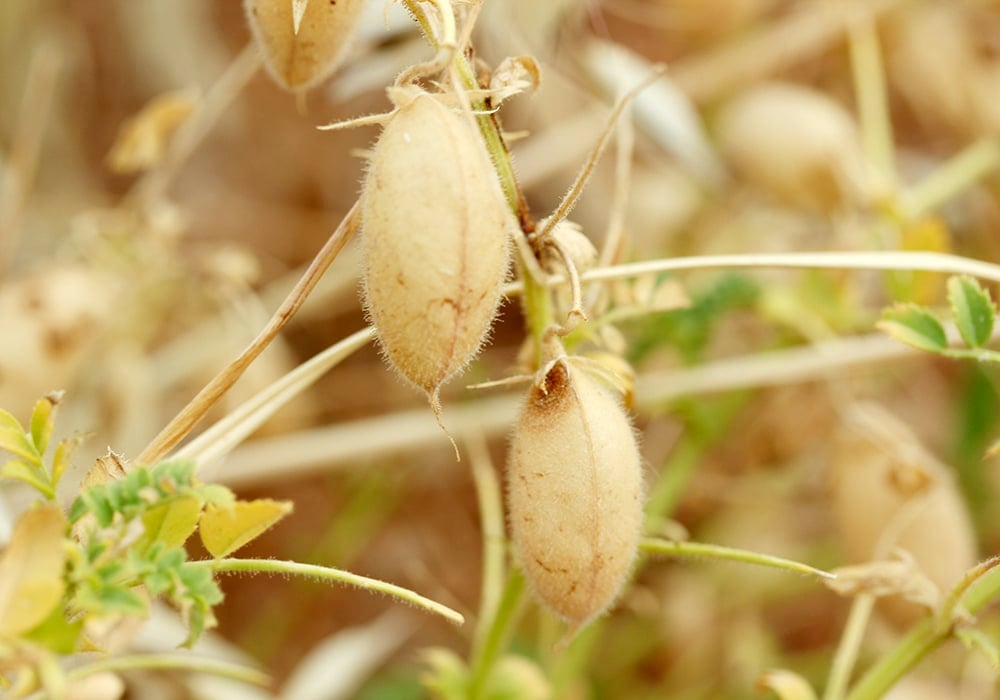With harvest in the home stretch in southern regions, thoughts turn to cropping plans for next year. In the typically drier brown and dark brown soil zones, more chickpeas will be seeded next spring.
Chickpeas don’t get a lot of attention because they aren’t a widespread cropping choice. The Saskatchewan Crop Insurance Corp. will only insure them in the drier regions of the province.
I’ve grown chickpeas almost continuously since they first became an option. In the beginning, it was desi varieties. Those are now grown on a very small acreage with kabuli types being the mainstay.
Read Also

Budget seen as fairly solid, but worrying cracks appear
The reaction from the agriculture industry to prime minister Mark Carney’s first budget handed down November 4th has been largely positive.
More than 20 years ago, chickpea area exploded, exceeding a million acres, mostly in Saskatchewan. Nothing else was paying the bills, and producers had some good luck with the crop for a few years.
Then ascochyta blight hit with a vengeance. Fungicide options were limited, and most farmers back then didn’t have a high clearance sprayer for multiple in-crop applications. Prices also took a dive.
Many growers vowed to never again grow chickpeas. Lentils became the pulse crop of choice in the areas where chickpeas had been popular.
In recent years, chickpea acreage has been rising. Aphanomyces root rot is big concern in lentils and peas. Chickpeas are somewhat resistant. Kabuli chickpea prices haven’t been sky-high, but returns have been good.
Over the years, the University of Saskatchewan’s Crop Development Centre has registered new varieties with better resistance to ascochyta. Many new fungicides are available. Most producers have a high-clearance sprayer, and applying fungicide is no longer a foreign concept. Chickpeas aren’t prone to lodging and are easier to combine than lentils.
On top of all that, we’ve had a string of drier years in the brown soil zones, particularly late in the growing season. If there’s too much rain in August, chickpeas don’t know when to quit growing and producers can end up with a frost-damaged crop with lots of green colour locked into the seed.
I’ve had years with very good returns from chickpeas, but I’ve also had bad years. In the very wet 2016 growing season, most of my chickpeas were baled for cattle feed. Crop insurance only insures to 70 per cent of average yield on chickpeas because they are considered a higher risk than other crops.
As this is being written, I’m in the midst of sorting my chickpea harvest by size. My production contract calls for a maximum of 10 per cent on the seven millimetre size. Beyond 10 per cent, the price drops from 44 cents a pound to 30 cents. My sample is over 18 per cent seven mm. Drier years tend to produce smaller calibre seed.
To avoid the price deduction, I’m running the crop through a cleaner to remove most of the seven mm size, leaving the more desirable eight and nine mm production for the buyer. The seven mm size makes great seed for next year. They go through the seeder better, and there’s more seeds per pound so the seeding rate can be lowered.
When choosing chickpea varieties, growers consider seed size along with yield and disease resistance. New growers will want to do their research. The Saskatchewan Pulse Growers website is a good resource, but you can’t beat the info you get from talking with other growers.
Chickpeas have the potential to reach a million acres again, maybe not in 2025, but possibly in 2026. Hopefully, a larger acreage will be sustainable this time around.
Kevin Hursh is an agricultural journalist, consultant and farmer. He can be reached by e-mail at kevin@hursh.ca.
















